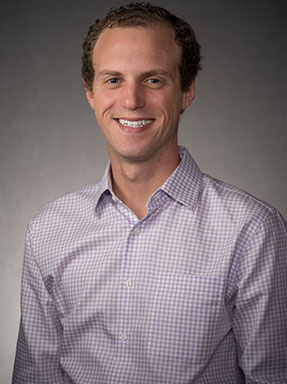Social Work Faculty Uses AI to Fight Substance Abuse in Youth Experiencing Homelessness

First, Anamika Barman-Adhikari looked at the problem: Youth experiencing homelessness were struggling with substance use more frequently and more severely than their adult counterparts.
Then, the associate professor at the University of Denver’s Graduate School of Social Work looked at the current solutions: reproduced policies and one-size-fits-all strategies.
“We found there’s a lack of information about how young people in different geographical sites across the country are experiencing homelessness, the services that are available to them and the kind of risk as well as protective behaviors they’re engaging in,” she says.
In her latest work, a trio of groundbreaking research papers, Barman-Adhikari examines this vulnerable population, exploring how and when to best intervene. With a team of seven researchers from institutions across the country, she is gaining unique insights into the nuanced causes of substance use disorder (SUD), enlisting the latest in artificial intelligence and computer science to mitigate the problem in homeless youth.
As of 2017, 19.7 million American adults struggled with substance use, national studies show. Mortality rates have risen every year as tobacco, alcohol and drugs cost the country $740 billion dollars annually. Young people experiencing homelessness are 46% more likely to struggle with SUD, and when they do, the mental and behavioral impairments are often more pronounced.
Barman-Adhikari and her team realized that stemming the problem for adults required addressing the issue early, so to speak.
By studying more than 1,600 youths across six states, the team could better understand their mental, physical and behavioral health needs. Using algorithms and machine learning to interpret the data allowed them to better predict the regionally specific factors that may lead to SUD.
“In terms of using AI, it’s pretty innovative,” Barman-Adhikari says. “I think the way social science researchers have attempted to predict and understand substance abuse is through very rudimentary statistical modeling techniques that don’t really capture the nature of substance use.”
According to Barman-Adhikari’s research, a number of factors can lead to SUD in youth experiencing homelessness, including experiencing or witnessing gun violence, an increased number of sexual partners, gang membership and mental health struggles ranging from post-traumatic stress disorder to bipolar disorder.
A young person’s location and environment can also influence their likelihood of falling victim to SUD. For example, policies to address SUD and homelessness in some states may work better than others because of local drug legalization, gun laws, living conditions and the resources available to a community.
After collecting the data, Barman-Adhikari’s team shifted its focus to SUD prevention and remediation, handing the numbers to Amulya Yadav, an assistant professor in the College of Information Sciences and Technology at Penn State University, and Aida Rahmattalabi, a PhD student at the University of Southern California, who each developed a tool.
Yadav's Comprehensive Opioid Response Tool Driven by Artificial Intelligence (CORTA) uses data on an individual’s educational background, mental health history, exposure to gun violence, drug use and sexually transmitted infections to predict their likelihood of developing an opioid addiction.
Rahmattalabi's Group-based Intervention Decision aid (GUIDE) examines an individual’s social network to structure more effective intervention and recovery groups — particularly important because the team’s research shows that a poor intervention can have detrimental effects.
“If we could uncover the actual causes behind a person’s engagement in substance abuse, then we could use these uncovered causes to personalize their rehabilitation programs,” Yadav explains.
This research and technology could have tremendous impact. For example, artificial intelligence could help social workers identify which young people may be at greatest risk for SUD and more effectively facilitate interventions for those who are struggling. With the assistance of technology, Barman-Adhikari says, nonprofits could more easily optimize the resources that are all too often stretched thin.
Like her previous research on the benefits of social media for homeless youth, Barman-Adhikari’s latest work is intentionally cross-disciplinary, which she says is critical to her team’s success.
Working with academics from other divisions causes her to view problems in a new way and ask questions about things she might otherwise overlook or take for granted.
“As an institution, DU is invested in interdisciplinary research,” she says. “And if institutionally there is support for this kind of work, there needs to be more concrete resources invested. This is really the future. Problems out in the real world are interdisciplinary, so they need interdisciplinary solutions.”










